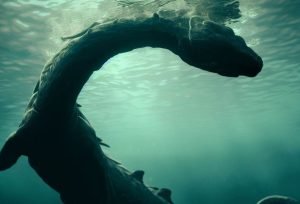A hint of alien life? Biosignature molecule discovered on distant planet

 Researchers have discovered a chemical signature in the atmosphere of a distant exoplanet called K2-18 b using the James Webb Space Telescope. The molecule is called dimethyl sulfide (DMS), which is only produced by living organisms on Earth, reports popularmechanics.com.
Researchers have discovered a chemical signature in the atmosphere of a distant exoplanet called K2-18 b using the James Webb Space Telescope. The molecule is called dimethyl sulfide (DMS), which is only produced by living organisms on Earth, reports popularmechanics.com.
This discovery is still being labeled as “possible” and will require follow-up data collection to confirm its presence in the atmosphere.
K2-18 b is expected to be the kind of world we would expect to find signs of life on other worlds. Researchers first took interest in K2-18 b after detecting water vapor in its atmosphere.
They classify it as a Hycean world, a type of planet entirely covered by a temperate ocean and insulated by a hydrogen-rich atmosphere. It orbits around a fairly cool star and is situated in its habitable zone.
However, the researchers are cautioning that when looking for alien life, all other possible explanations must be ruled out before concluding that there is life.
The extended wavelength range and unprecedented sensitivity of JWST enabled robust detection of spectral features with just two transits. One transit observation with Webb provided comparable precision to eight observations with Hubble conducted over a few years and in a relatively narrow wavelength range.
We are getting good enough at seeing into the atmospheres of exoplanets that we are getting flags. Many of these flags are likely to be false, but having the observational capacity to see flags at all was completely out of our reach just a short time ago.
The ultimate goal is the identification of life on a habitable exoplanet, which would transform our understanding of our place in the universe.
Extraterrestrial organisms or not, we are getting good enough at seeing into the atmospheres of exoplanets that we are getting flags. A lot of those flags are probably going to be false, but having the observational capacity to see flags at all was completely out of our reach just a short time ago.
“Our ultimate goal is the identification of life on a habitable exoplanet, which would transform our understanding of our place in the universe,” Madhusudhan said in a news release. “Our findings are a promising step towards a deeper understanding of Hycean worlds in this quest.”




